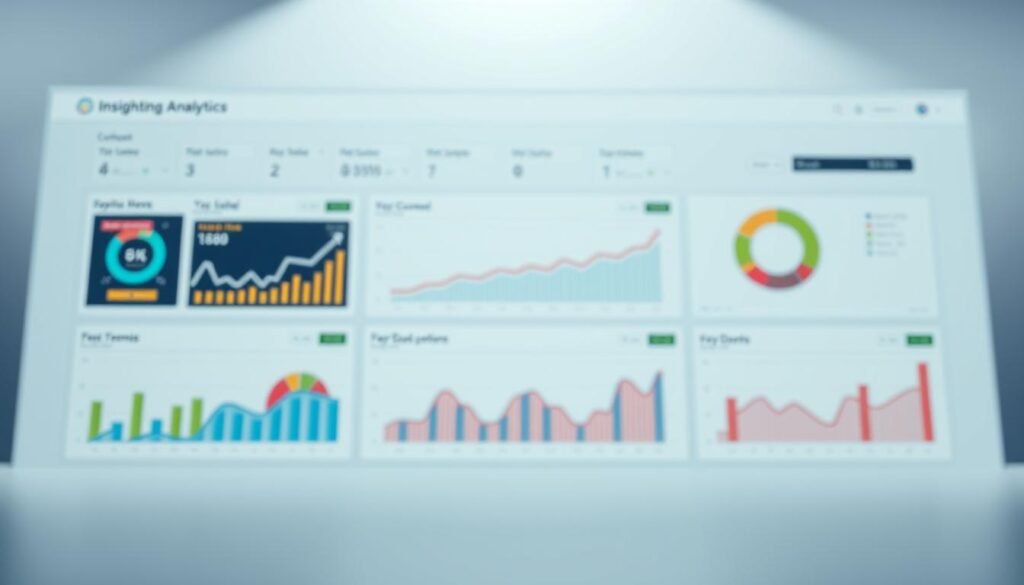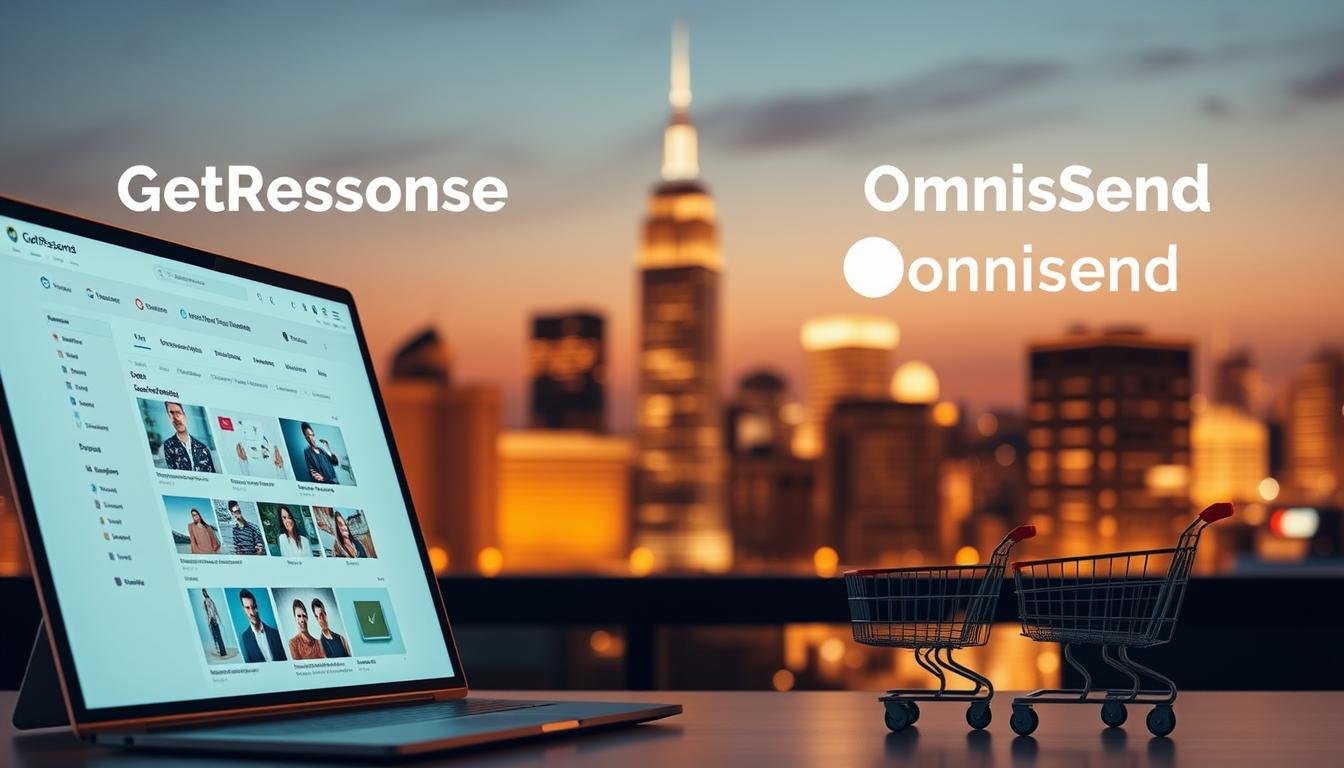Which email platform will actually boost your revenue: one built around retail workflows or one with deeper integrations and reporting? That question guides this comparison.
You need clarity fast. Both platforms offer drag-and-drop builders, A/B testing, SMS, templates, and automation. This piece cuts through marketing noise to show practical differences.
We compare core features and tools that matter to U.S. businesses. You’ll see how templates and builders affect creative speed and campaign performance.
We also map automation depth, pre-built workflows, and reporting so you can link activity to revenue. Expect direct, data-driven commentary that helps you pick the best platform for your stack and growth goals.
Key Takeaways
- Email builders and templates shape campaign velocity and results.
- Automation depth and ecommerce workflows drive conversion opportunities.
- Reporting and integrations affect how you use marketing data.
- Support and available tools change real-world setup time for businesses.
- Pricing and plan structure should match contact tiers and usage patterns.
Who this comparison is for and how we evaluated both platforms
Marketing leaders and teams will find this comparison tailored to real operational needs, not marketing copy. It’s aimed at U.S. businesses that must pick an email marketing solution that fits their roadmap and contact growth.
We tested core tools and features across seven pillars: campaigns, automation, list building/forms, segmentation, analytics/reporting, pricing, and customer support.
Our methodology focused on hands-on depth, the breadth of triggers and rules, and how much time it takes to ship high-quality emails under deadlines. We also measured how each platform responds to ecommerce events like purchases, abandoned carts, and product browsing.
- We prioritized revenue-centered data and cohort insights over vanity metrics.
- Plans and feature trade-offs were compared relative to growing contacts and multichannel needs.
- Support assessment included 24/7 availability, live chat speed, and expert access for users.
Use this section as a practical lens to weigh trade-offs and pick the right plan for your team and contacts.
GetResponse vs Omnisend for Ecommerce Stores: the quick snapshot
This quick snapshot summarizes core similarities and decisive differences between the tools.
Core similarities that matter to online sellers
Both platforms offer a drag-and-drop email builder, professional templates, A/B testing, and multichannel campaigns that scale with your business.
They support email and sms automation, plus pre-built and custom workflows to capture cart activity and repeat purchases.
Where each platform truly differentiates
One tool adds push and web push notifications, conditional content, unlimited segments on all plans, and strong sales reporting with clickmaps.
The other provides sitewide live chat, paid transactional emails as an add-on, and deeper ecommerce and FTP reports that feed BI tools.
- Small teams shipping frequent emails: either option works; choose based on push vs. chat needs.
- Revenue-focused ops: the platform with sales reporting and clickmaps is better for tight attribution.
- Global marketing and BI pipelines: the tool with export and recommendation reports eases executive dashboards.
Support and testing
Both offer free plans and 24/7 chat and email support so you can test campaigns and integrations before committing.
Email campaigns, editors, and templates that drive higher open rates
Your creative stack determines how fast you move from idea to send. A modern email builder and a reliable editor let you produce on-brand messages without long review cycles.
Drag-and-drop email builder and professional templates
Both platforms include a drag-and-drop editor and libraries of templates that cut production time.
Templates support reusable blocks, product grids, and dynamic content so your email templates stay fresh while remaining consistent.
A/B testing is native, so you can test subject lines, layouts, and CTAs to lift open rates and clicks.
Multichannel campaigns: email, SMS, and push notifications
One tool expands outreach with SMS and web push, giving you more ways to reach mobile shoppers between emails.
Both tools align cadence across channels, helping your promotions and landing pages feel coordinated rather than intrusive.
- Fast production: editors that ship polished emails quickly.
- Reusable frameworks: campaign templates for drops and seasonal pushes.
- Creative speed: free stock photos and GIFs accelerate asset assembly.
Pair these templates and the builder with tight segmentation and timing to turn routine sends into revenue-driving campaigns.
Marketing automation and ecommerce workflows
Automation and workflow design decide how quickly you turn shopper intent into purchases. Visual journey builders map welcome, browse, cart, post-purchase, and winback sequences so you can scale timely outreach.
Triggers, rules, and actions shape what happens after a product view or order placed event. One platform exposes a broader menu of triggers, rules, and actions and ships dozens of pre-made flows. The other focuses on ecommerce-first workflows with built-in push notification automation and conditional content to personalize messages at scale.
Both systems support CRM and web/external triggers, tagging, and contact scoring. You can automate abandoned cart and post-purchase emails, test branches with A/B logic, and update scores based on engagement.
- Fast start: more pre-built flows cut setup time when you need results.
- Real-time: event-based automation reacts to product views, orders, and other signals.
- Onsite support: live chat can complement triggered email journeys and onsite conversion paths.
Choose the stack that matches your priority: breadth of controls and templates or ecommerce-native push, conditional content, and SMS capabilities for tighter personalization.
List building, forms, and landing pages that convert
High-converting forms and focused landing pages are the backbone of predictable list growth. Use lightweight signup and contact forms that map directly to segments and lifecycle automations so you can act on new contacts immediately.
Signup, contact, and exit-intent forms
Deploy embedded signup and contact forms across your website to capture intent without interrupting the user journey.
Exit-intent forms reduce leakage by offering timely promos or teasers as visitors move to close a tab.
Consent collection and SMS opt-ins
Compliant growth matters. One platform includes built-in TCPA and GDPR consent capture and SMS opt-ins so consent flags sync with contact profiles and automations.
Gamification, countdowns, and promo tools
Gamified wheels and countdown timers lift engagement on promotional pages. Promo codes and popups convert promotion-sensitive traffic faster than generic offers.
Landing pages and templates
Predesigned form templates and dedicated landing pages speed campaign launches. Keep pages mobile-optimized and fast to submit to maximize completed emails and verified contacts.
- Practical tips: connect form fields to consent flags and tags, test placement and incentives, and monitor submit rates to balance list growth with deliverability.
For a deeper operational look, read this detailed review on setup and complaints handling.
Segmentation, analytics, and reporting for revenue impact

Clear, timely analytics turn segmentation into measurable revenue instead of guesswork. Use behavior and profile data to target the right audience at the right moment and measure the result.
Unlimited segments, lifecycle stages, and contact profiles
Scale your targeting without caps. Unlimited segments let you slice audiences by behavior, recency, and stage so campaigns stay precise as lists grow.
Contact profiles and lifecycle stages provide context—who is browsing, buying, or at risk—so you trigger timely emails like replenishment or winback.
Geolocation, tags, and action-based segments
Use geolocation, tags, scoring, and event-based rules to build nuanced segments. These filters help you run localized promotions and action-specific campaigns with less waste.
Sales reporting, clickmaps, and advanced reports
Link creative to revenue. Sales reporting connects campaigns to orders while clickmaps show on-email engagement for creative optimization.
Advanced ecommerce and FTP reports support deep analysis and let you export raw data to BI tools for executive dashboards.
Integrations and report exports for deeper analytics
Exported data and native integrations keep analytics out of silos. Connect signup form reports, audience growth metrics, and campaign results to central dashboards for unified insight.
- Practical tips: combine segments with frequency caps to protect deliverability.
- Measure: AOV, LTV, and revenue per recipient in exported reports for executive-ready views.
- Use data: signup form and audience growth reports to optimize capture points and future campaigns.
Pricing and plan structure for growing contact lists
Plan design and contact tiers decide when you upgrade and what features unlock. Start with free plans to test editors, templates, and forms before committing to paid rates that scale with contacts.
Free plan comparisons: editors, templates, and form capabilities
Both vendors offer a free tier so you can try editors, templates, and form tools. Use that time to validate deliverability, form mapping, and basic automation.
Paid tiers and starting prices for U.S. businesses
Paid plans begin around $16–$19/month depending on tier. Example rates by contacts vary: roughly $35 vs $22 for 2.5k; $115 vs $59 for 10k; $245 vs $129 for 25k; and $720 vs $399 for 100k.
Feature trade-offs as your list size and SMS needs scale
Model total costs including SMS and any account expert fees (an option at about $400/month) before you scale. Confirm which features—advanced reporting, transactional emails, or extra apps—are gated by plan.
- Tip: map your contacts growth to plan breakpoints to avoid rushed migrations.
- Tip: run a 30-day paid trial when available to test automations and data exports.
| Contacts | Approx. Rate A | Approx. Rate B |
|---|---|---|
| 2,500 | $35 | $22 |
| 10,000 | $115 | $59 |
| 100,000 | $720 | $399 |
Customer support, languages, and response times

Reliable support can be the difference between a smooth campaign and a costly outage during peak sales. You need fast help, clear escalation paths, and language coverage when you run time-sensitive sends.
24/7 live chat and email support across both platforms
Both vendors provide 24/7 live chat and email support, so you have assistance during promotions and holiday peaks.
One provider reports a median response time of three minutes or less on chat, which helps you resolve issues before they affect revenue.
Awards, help centers, and access to account experts
Each platform maintains robust help centers. One also offers an email marketing academy for deeper training and self-service enablement. Additionally, these resources provide a wealth of tutorials and guides that cater to users of all experience levels. For those looking to enhance their marketing strategies, exploring the GetResponse features for marketers can lead to more effective campaigns and improved customer engagement. By leveraging these tools, users can automate workflows, track performance metrics, and personalize communications with ease.
Industry recognition matters: both have earned awards and strong reviews on marketplaces. If you need ongoing strategy, an optional account expert is available for about $400/month.
- Practical tip: verify SLAs and escalation paths before major launches.
- Global teams: multilingual chat and email reduce coordination risk across time zones.
- Measure impact: track your internal time to resolution to validate support value.
| Support Area | Availability | Response Time | Extras |
|---|---|---|---|
| Live chat & email | 24/7 | Median ~3 minutes (one provider) | Help center, in-app support |
| Multilingual coverage | 8+ languages (email & chat) | Global time zones | Platform in 10+ languages across 180 countries |
| Premium support | Optional account expert | Dedicated reviews & reports | Marketing academy, awards, strong marketplace ratings |
Conclusion
strong.
Match platform strengths to your customer paths. Choose the provider that aligns with your workflows and website touchpoints. If you need push notifications, unlimited segmentation, and tight sales reporting, pick the tool built around store triggers. If live chat, transactional emails, and export-ready reports matter more, pick the one with deeper BI-friendly options.
Both platforms give solid builders, A/B testing, and automation to lift open rates and improve email campaigns. Start on a free plan, validate core automations and forms, then model your plan against projected contacts, sms use, and growth.
Final rule: choose the platform that reduces operational drag and scales your marketing as customers move from pages to purchase.

